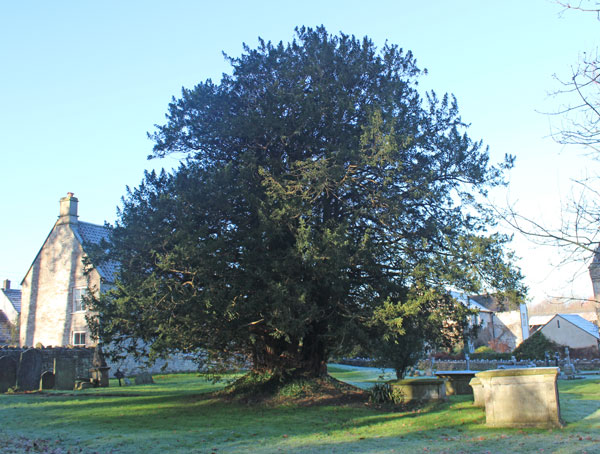Yew Tree

Estimating the Age of a Yew Tree
The yew tree standing in the graveyard of our church has a girth of 580 cm or 19 ft approximately. However in 1791 it was described as having a body “near one and twenty feet in circumference”.
Estimating the age of a yew tree is tricky. Yew grows extremely slowly, laying down dense, close-grained wood – the reason it was so suitable for making the longbows of England and Wales. A yew can stop growing for centuries, until some change in its environment reawakens the tree, and it starts growing again. Yew can also put out new shoots from the base, which can form a “second” tree around a decaying trunk.
The only precise way of estimating the age of a tree is through tree-ring analysis – but this is made difficult because the oldest yew trees are hollow and rings may be missing. One rule of thumb is that yew trees put on one foot of girth every thirty years - which would give our tree an age of 600-800 years. Another accepted formula for estimating the age of yew trees gives an estimate of nearer 1100 years. The siting of a yew to the south west of a church can suggest a Saxon site.
It is staggering to think of the periods of history that the tree may have lived through – it might possibly pre-date the Church itself, and might even have stood when Priston’s Domesday record was written.
The Mythology of Yew Trees
The yew is surrounded by myth. It is associated with the Tree of Life concept that can be traced through Celtic and Nordic tradition back to the Neolithic Age. The fact that a living branch can put down a new root through rotting material, and the way in which apparently dead trees can regenerate themselves, means they were associated with rebirth and immortality. In the Christian era this was transmuted into an association with the Resurrection.
It is this symbol of life that looks over our graveyard